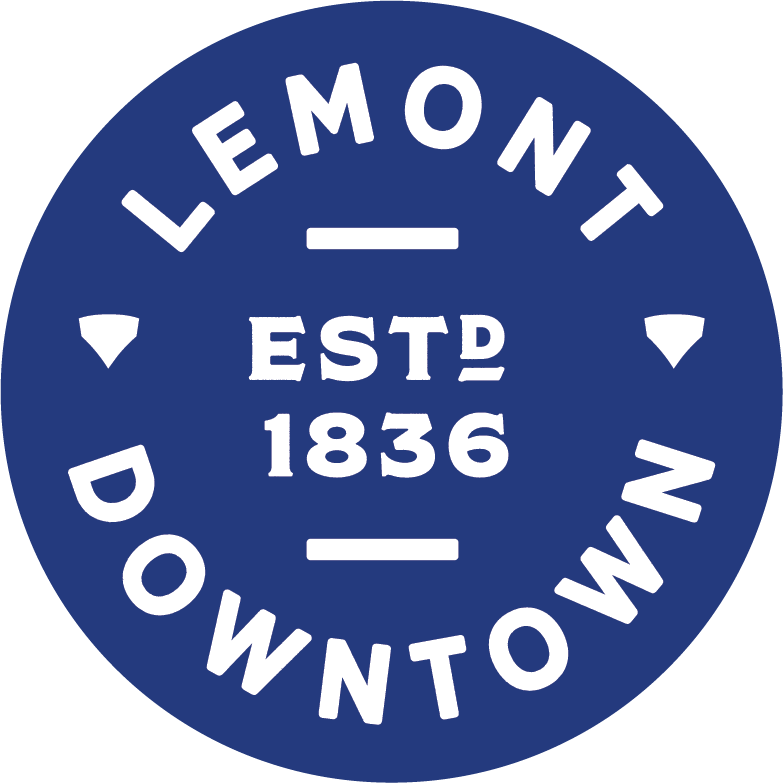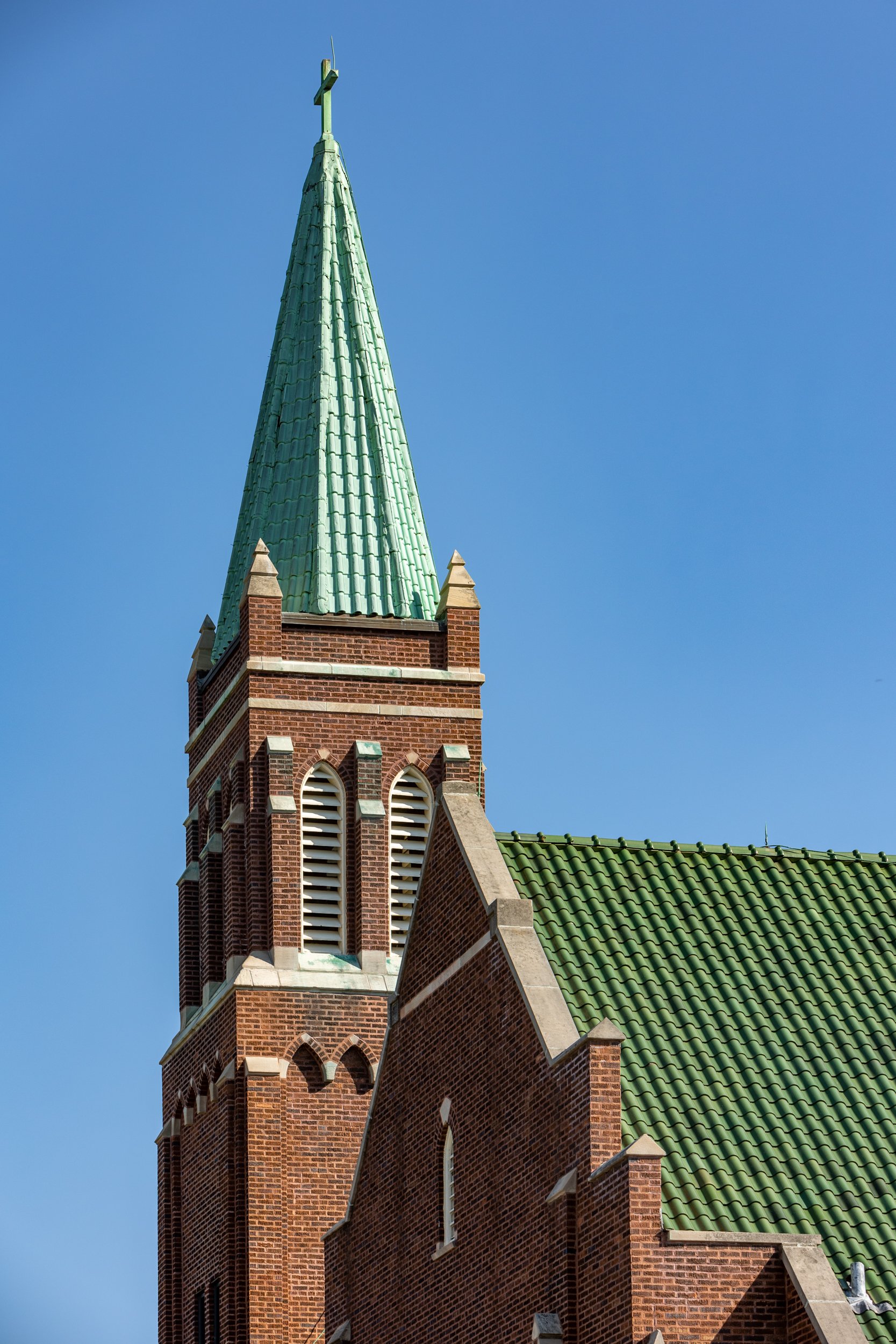The Seven Steeples of Lemont
Bethany Lutheran Church | Lemont, IL
Photo Credit: Molly Hebda Photography
When you hop off I-55 onto Lemont Road south, be prepared to take a deep breath for what awaits you as you come down the valley into downtown Lemont. Situated on a bluff overlooking the DesPlaines River, above the peaks of luscious trees rise many of the church steeples of Lemont.
If you’re not familiar with Lemont, we’re a small village. And yet, as you stroll through Lemont Downtown or drive through the village, you’ll notice many churches within a stone’s throw of each other.
We connected with Susan Donahue, President and Museum Coordinator of the Lemont Area Historical Society and Museum, to get the full story on how so many places of worship found their home in Lemont.
Ready for your history lesson?
St. Alphonsus | Lemont, IL
Photo Credit: Molly Hebda Photography
THE BACKSTORY
Around 1832, after the Black Hawk War, the United States worked to remove all Native Americans and Indigenous People from Illinois. This period between 1832 and 1850 became known as the Trail of Tears with Native Americans forced from their homes and relocated to reservations west of the Mississippi River.
With Native Americans and Indigenous people displaced, Chicago’s population was just 350 people. The first farmers arrived in what is now Lemont in 1833 and the quarrymen arrived just a few years later, ready to build the Illinois & Michigan Canal. The completion of the I&M Canal led to increased travel and mining–it truly became the artery responsible for the growth of Chicago and Illinois.
“Around 1836, many immigrants were making their way from the East Coast to Midwest in search of work,” adds Donahue. “Each immigrant group – Irish, Swedish, German, Polish, Italian, etc. settled in Lemont, usually with the men finding work in the Quarries. Everyone spoke a different language, ate different foods, and had different ideas about the ‘other’ group.” With the segregation among immigrant populations, they each created parishes to worship in their native tongue and build community. These unique parishes became our Seven Steeples.
THE SEVEN STEEPLES
Lemont’s earliest steeple is at St. James at Sag Bridge, founded in 1833 by Irish canal workers digging the I&M Canal. According to the St. James website, the cornerstone for the present building was laid in 1853, with “the site of St. James Church is uniquely located on a hill overlooking the valley below and was formed by glacial waters that later became the Des Plaines River and the Sag Channel.” The church is constructed of locally quarried Lemont limestone, hauled by up the hill its parishioners and builders.
St. James at Sag Bridge Catholic Church
Photo Credit: Molly Hebda Photography
This location was inhabited for centuries because of its importance as a lookout–first by Native Americans and later as a French Fort.
St. Patrick Catholic Church followed as the second Irish Catholic church in Lemont, and the first in downtown. The current church, also built from Lemont limestone, was begun in 1895.
St. Patrick’s Catholic Church
Photo Credit: Molly Hebda Photography
Lemont United Methodist Church, now known as the Old Stone Church and the location of the Historical Society, was founded in 1861 and became home to the “orange Irish” or people from Northern Ireland and England. The Lemont Area Historical Society took over the building in 1970 and opened the church for weddings, baptisms, and memorial services in 1998.
Old Stone Church (Now the Lemont Area Historical Society and Museum)
Photo Credit: Molly Hebda Photography
The remaining steeples carry a similar theme. Now celebrating its 150th Anniversary, Bethany Lutheran Church, founded in 1872, was home to Swedish immigrants. St. Cyril and Methodius Church, founded in 1884, was home to Polish immigrants. St. Matthew Ev. Lutheran Church, founded in 1889, was home to German Lutheran immigrants. St. Alphonsus, founded in 1867, was home to German Catholics. In 2020, St. Alphonsus merged with St. Patrick.
WHY ALL THE CHURCHES?
“It wasn’t only religion but language and culture,” expressed Donahue. “Each nationality brought the mistrust from the old country. In church, they had an opportunity to gather, worship, speak the same language, host events and join in fellowship. In the quarries, their country origins were taken advantage of and used to separate them giving less desirable work to a group despised by another.”
St. Cyril and Methodius Church | Lemont, IL
Photo Credit: Molly Hebda Photography
This held on when it came to the afterlife. A leading reason for the number of cemeteries in Lemont ties back to each immigrant population holding separate services and burial practices based upon their religious beliefs and ties to the parish.
It was only in school that the barriers began to break down. Central School, built in 1868, became home to the children of all of the new settlers. Doing what children do, they made friends through learning, and games, and came to know English as a second shared language.
To this day, all seven churches remain in some form or fashion and are fully integrated with any race, ethnicity, and nationality welcome.
For more information on the Seven Steeples, check out the Lemont Area History Society and Museum for upcoming events and tours or the 125th Anniversary Book of Lemont.
St. Matthew Ev. Lutheran Church | Lemont, IL
Photo Credit: Molly Hebda Photography
References
“Immigration to the United States, 1851-1900 : Rise of Industrial America, 1876-1900 : U.S. History Primary Source Timeline : Classroom Materials at the Library of Congress : Library of Congress.” The Library of Congress, The Library of Congress, 2022, https://www.loc.gov/classroom-materials/united-states-history-primary-source-timeline/rise-of-industrial-america-1876-1900/immigration-to-united-states-1851-1900/.








